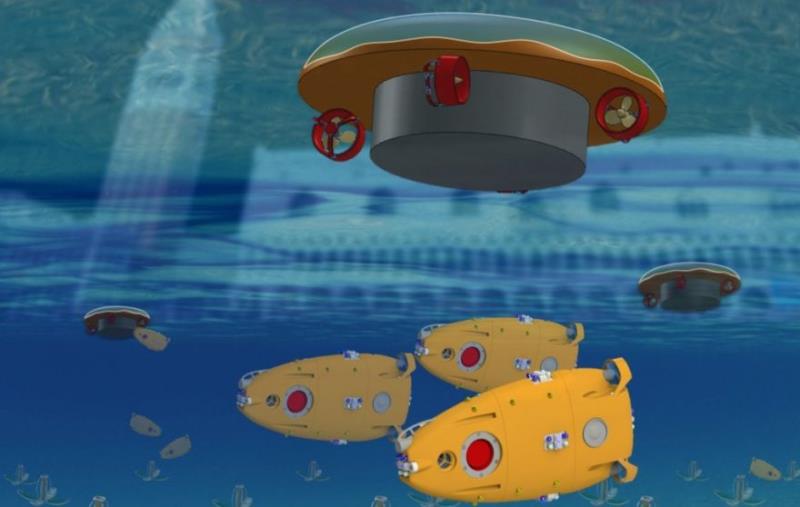Bio-inspired robots will examine the waters of Venice

date: 29/10/2015
Project: Submarine cultures perform long-term rob...
acronym: subCULTron
See also: CORDIS
A swarm of autonomous underwater robots
The FET project SubCULTtron aims at developing the largest underwater system that will collect, coordinate and communicate data autonomously. The project consists of three different kinds of robots, each of them designed for a different task, and none of them coordinated by humans. The sophisticated mechanisms of robots are inspired by natural bio-algorithms, derived from social insects, slime moulds and fish.
- Artificial Mussels (aMussels) mirror real mussels: they are equipped with a self-protecting shelf which, together with anchoring system, enables them to collect data from the seabed.
- Artificial fish (aFish) are inspired by real fish: they are fast, nimble, able to explore large depths and to search for specified targets. They are designed to collect information gathered by aMussels and subsequently send it to artificial pads
- Artificial pads (aPads) receive information from aFish robots and send it to the lab - they are the last link between the swarm and the researchers. Mimicking lily pads floating on the water surface, they also collect solar energy by changing direction of their "leaves" to face the light source.
All robots are planned to run efficiently using advanced energy harvesting techniques developed by the project team. In addition, the complex bio-inspired software and hardware of robots make them resilient in difficult conditions, even when single robots fail. They’re also most effective in unpredictable and changing environment, such us Venetian channels. Moreover, the single robots are smaller and less costly compared to conventional water robots, which allows maximising data collection on a large scale.
First experiments in Venice
The first subCULTron prototypes were presented at EXPO 2015 location in Venice in October. Experiments took place in the channels, in a mussel farm and in the surrounding salt marshes. The waters of Venice are particularity diverse from the biological and ecological point of view, creating perfect environment for testing underwater technology. The robots are expected to establish new methods of protecting the canals of Venice from future damage, as the region is already heavily polluted and affected by climate change, local industry, tourism and inhabitants. Scientists are also anticipating that the variety of collected data concerning the quality of water and other relevant factors will prove useful for humans, and be easily accessible for everyone on Google Maps.
Having concluded the initial test runs in Venice, scientists hope to have fresh hardware prototypes ready by next year. SubCULTron, which is a follow up project of the EU supported “CoCoRo”, will run until March 2019. The project is coordinated by University of Graz (Artificial Life Laboratory).
Watch the simulation video:
